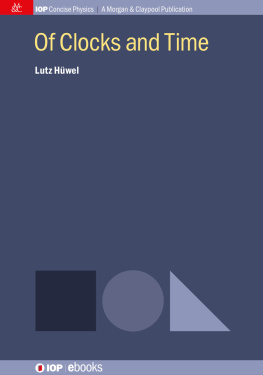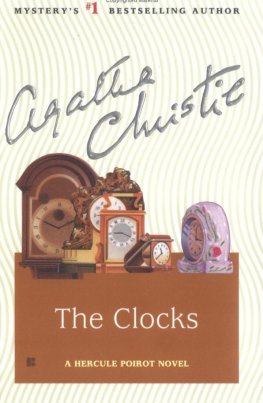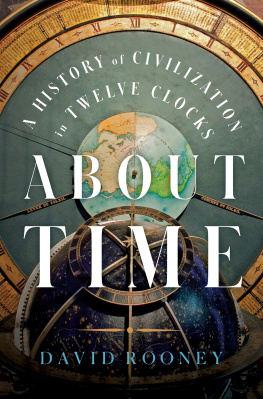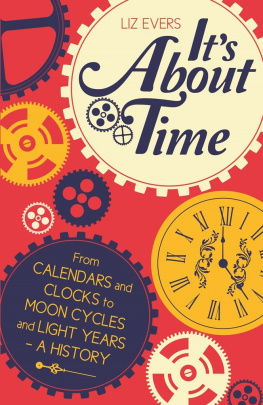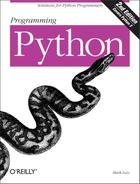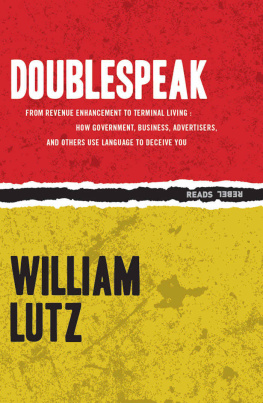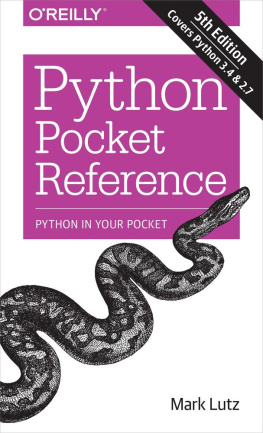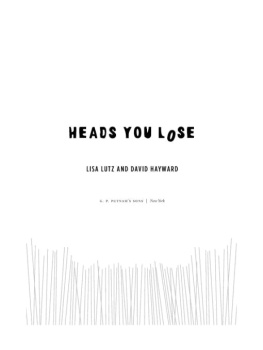Lutz Hüwel - Of Clocks and Time
Here you can read online Lutz Hüwel - Of Clocks and Time full text of the book (entire story) in english for free. Download pdf and epub, get meaning, cover and reviews about this ebook. year: 2018, publisher: Morgan & Claypool Publishers, genre: Children. Description of the work, (preface) as well as reviews are available. Best literature library LitArk.com created for fans of good reading and offers a wide selection of genres:
Romance novel
Science fiction
Adventure
Detective
Science
History
Home and family
Prose
Art
Politics
Computer
Non-fiction
Religion
Business
Children
Humor
Choose a favorite category and find really read worthwhile books. Enjoy immersion in the world of imagination, feel the emotions of the characters or learn something new for yourself, make an fascinating discovery.
Of Clocks and Time: summary, description and annotation
We offer to read an annotation, description, summary or preface (depends on what the author of the book "Of Clocks and Time" wrote himself). If you haven't found the necessary information about the book — write in the comments, we will try to find it.
Of Clocks and Time — read online for free the complete book (whole text) full work
Below is the text of the book, divided by pages. System saving the place of the last page read, allows you to conveniently read the book "Of Clocks and Time" online for free, without having to search again every time where you left off. Put a bookmark, and you can go to the page where you finished reading at any time.
Font size:
Interval:
Bookmark:

Lutz Hwel
Wesleyan University, Middletown, USA
Morgan & Claypool Publishers
Copyright 2018 Morgan & Claypool Publishers
All rights reserved. No part of this publication may be reproduced, stored in a retrieval system or transmitted in any form or by any means, electronic, mechanical, photocopying, recording or otherwise, without the prior permission of the publisher, or as expressly permitted by law or under terms agreed with the appropriate rights organization. Multiple copying is permitted in accordance with the terms of licences issued by the Copyright Licensing Agency, the Copyright Clearance Centre and other reproduction rights organisations.
Rights & Permissions
To obtain permission to re-use copyrighted material from Morgan & Claypool Publishers, please contact .
ISBN 978-1-6817-4096-6 (ebook)
ISBN 978-1-6817-4032-4 (print)
ISBN 978-1-6817-4224-3 (mobi)
DOI 10.1088/978-1-6817-4096-6
Version: 20180401
IOP Concise Physics
ISSN 2053-2571 (online)
ISSN 2054-7307 (print)
A Morgan & Claypool publication as part of IOP Concise Physics
Published by Morgan & Claypool Publishers, 1210 Fifth Avenue, Suite 250, San Rafael, CA, 94901, USA
IOP Publishing, Temple Circus, Temple Way, Bristol BS1 6HG, UK
To Ruth.
With this book, I invite you to join me in an exploration of ideas concerned with time and the tools used to measure it. It seems reasonable if not logically required to define a quantity first before one can try to measure it. Therefore it is puzzling that time can be measured with astonishing precision]. My approach is simply to describe a variety of observable, measurable aspects related to time with the hope that this multifaceted collection can point to a usefuleven if approximateway to understand time.
The story I want to tell begins with a few natural phenomena that relentlessly mark both linear change and cyclic repetitiveness: day and night, the lunar cycle, and the course of the Sun and the stars in the sky (chapter Days, months and years). In this chapter, astronomical observations are summarized, as well as the methods with which they have been obtained and how modern physics explains them. Many people living in different cultures and eras have contributed to this accomplishmentit was a truly global endeavor. Calendars of all types are testimony to this effort, as are ancient monuments and artifacts such as the Kukulkan pyramid, built centuries ago in the jungles of Chichen Itza, or the Antikythera mechanism, rediscovered almost 2000 years after it was lost in the waters of the Aegean Sea. While its manifold beginnings are obscure, the enterprise of observing the heavens has produced well-documented and astonishing achievementsamong them the Copernican revolution and Newtons foundation of modern physics. Seeing clearer and further is and was only possible because others have been on the lookout before. It turns out that Newton in particular will be a constant companion helping us along the way to gain insightincluding in those instances where he turned out to be wrong.
The tale will continue with the effort to divide the natural temporal units of year, month and day into finer and finer parts. Here begins the history of clocks in the more common usage of the word, e.g. sundial, hourglass and mechanical clock (chapter also contains a discussion of a few basic questions related to clocks in general. What are the minimum ingredients? What does it take to build a perfect clock? How do you measure the approach to perfection? Simple mechanical systems, such as the pendulum and a bead attached to a coiled spring, will serve us well as toy models. Their behavior can be analyzed quantitatively (thanks, Isaac), yielding benchmarks and useful parameters for comparison with other, more realistic clocks.
In the 19th and 20th centuries, the accelerated pace of technological development, commerce and other social interactions meant that even a fleeting second was found to be too long for the need of precise and accurate measurements. Replacing the ticking of man-made oscillators with the resonant vibrations of small quartz crystals was a breakthrough in the precision and stability of clocks. Shortly after the invention of the quartz clock, the time-keeping quartz oscillator was in turn replaced by the even more exact and steady vibrations of atoms. Since then atomic clocks have been fine-tuned to become machines of awesome precision. Chapter (From milliseconds to attoseconds: is there a limit?) follows this thread of the story and explores the current limits with which rates of change of physical quantities can be ascertained. The chapter also contains a rudimentary synopsis of atomic physics as it pertains to the functioning of atomic clocks. In addition, I will try to shed further light on the notion of clock precision and stability.
The development of atomic clocks unfolded in the context of two separate revolutions in physics that have fundamentally altered our view of the world. Chapter (Space and time forever entwined) summarizes the basic concepts of these theoriesseverely abbreviated to fit the purpose at hand. As has been pointed out many times by others, Einsteins theory of relativity might be called with equal justification, a theory of the absolute. Simultaneity and the duration of temporal intervals do indeed depend on the state of the observer. However, the speed of light and a suitably formulated spacetime interval between any two events are absolute, agreed upon by all observers. How this comes about and what it means for our understanding of time and its measurement will be the main emphasis of this part of the story.
Periodic transformations and circular time, irreversible changes and linear timethese two themes provide a clear distinction between notions of time in different cultures. They are also at the core of two different strands of ideas in physics. For the most part, the story up to this point has been about circular time and things that happen periodically. But even a set of atomic fountain clocks, at one moment synchronized to the highest possible precision, will run out of tune eventually. Initial coherence will be lost and the arrow of time will assert itself: there is a direction of time. One truly stochastic, unidirectional processradioactive decayhas been used to serve as an altogether different type of clock. Chapter (From beginning to end), the final one, traces the basic ideas and observations of this aspect of telling time, which, with pleasing symmetry, connects the narrative back to the starting chapter.
One last warning before I begin: the linear sequence of the narrative belies the multi-dimensional connections between the topic that each chapter tries to focus on. Furthermore, there was never a neat linear progression of our thinking, dare I say understanding, of timeor any subject for that matter. For this reason, I will not always be able to follow a straightforward trajectory in my story. Truth be told, I also like to digress on occasion.
We all know time can fly. And in a song by The Alan Parson Project, time keeps flowing like a river. I like that metaphor: on occasion there is but a trickle and water-time hardly moves, but soon enough it rushes forward with great speed and force. Then again, the comparison has its limitslike all analogies do. Water flows, but time is not a substance. So what is flying when time flies? This is a difficult question. Maybe so difficult that all we can do is use analogies, after all. Still, many valiant attempts have been made to find an answer to the question of what time is. I marvel at St Augustines struggle with the concept of time in his
Font size:
Interval:
Bookmark:
Similar books «Of Clocks and Time»
Look at similar books to Of Clocks and Time. We have selected literature similar in name and meaning in the hope of providing readers with more options to find new, interesting, not yet read works.
Discussion, reviews of the book Of Clocks and Time and just readers' own opinions. Leave your comments, write what you think about the work, its meaning or the main characters. Specify what exactly you liked and what you didn't like, and why you think so.

